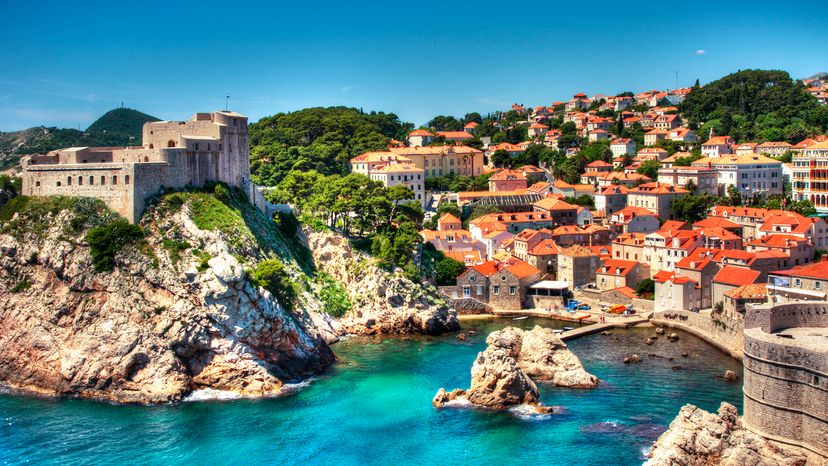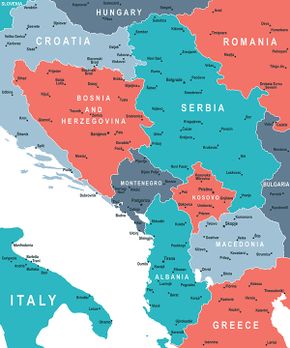While there is no singular, definitive list of Balkan states, these 10 are generally considered to be part of the Balkan region.
1. Albania
Albania is situated in the southwestern part of the Balkan Peninsula along the Adriatic Sea. With a total population of approximately 2.8 million people, it boasts a rich history influenced by the Illyrians, Romans, Byzantines and Ottomans. Albania is known for its stunning landscapes, including its beautiful coastline and the Albanian Alps.
2. Bosnia and Herzegovina
Northwest of Albania, Bosnia and Herzegovina has a population of about 3.2 million people. This country is renowned for its cultural diversity, with a mix of Bosniaks, Croats and Serbs.
The capital city, Sarajevo, is known for its historical significance and vibrant cultural life. This area also played a major role in the dissolution of Yugoslavia during the 1990s.
3. Bulgaria
Bulgaria is home to approximately 6.6 million people and is situated in the southeastern part of the Balkan Peninsula. The country features the Balkan Mountains, which run through its territory and significantly influence its climate. During the Middle Ages, a Bulgarian empire cropped up across the Balkans — twice.
4. Croatia
Croatia, with a population just under 4 million, is located on the western edge of the Balkan Peninsula along the Adriatic Sea. It's a popular tourist spot because of its gorgeous coastline, historic cities like Dubrovnik and its numerous islands. Many Croatians immigrated to the ports of Southern California during the 19th and 20th centuries.
5. Kosovo
Kosovo is one of the newer Balkan nations and has a population around 1.7 million.
In the 1990s, Kosovo was a significant flashpoint in the breakup of Yugoslavia, culminating in a violent conflict between ethnic Albanians and Serb forces. The humanitarian crisis and ethnic cleansing led NATO to intervene in 1999. This eventually paved the way for Kosovo's declaration of independence in 2008.
6. Montenegro
Montenegro has a population of roughly 600,000 people. Explore this country and you'll see rugged mountains, medieval villages and a narrow strip of beaches along its Adriatic coastline. The Bay of Kotor, a UNESCO World Heritage site, is one of its most famous attractions.
7. North Macedonia
North Macedonia has a population of about 2.1 million people. It is a landlocked country known for its rich history, which dates back to the ancient kingdom of Paeonia and Alexander the Great's Macedonian Empire.
8. Romania
Romania is located in the northeastern part of the Balkan Peninsula. The forested and fabled region of Transylvania comprises most of the country's west and central territory. Ringed by the Carpathian Mountains, its medieval castles, including Bran Castle, are the birthplace of the Dracula legend.
While most Balkan states are toward the center of the continent, Romania is the gateway to Eastern Europe.
9. Serbia
From the bustling streets of its vibrant capital, Belgrade, to the historic fortress of Kalemegdan overlooking the Danube and Sava rivers, Serbia is a must-see Balkan country.
You can find Serbia's rich traditions reflected in its lively festivals, diverse cuisine and the unique architectural heritage found in its monasteries and fortresses, offering a compelling journey through the layers of southeast Europe's past and present.
10. Slovenia
Slovenia is situated at the crossroads of central and southeastern Europe. Known for its mountains, ski resorts and lakes, Slovenia is a recent addition to the European Union and has a well-developed economy. It's also the birthplace of renowned contemporary philosopher, Slavoj Zizek.

